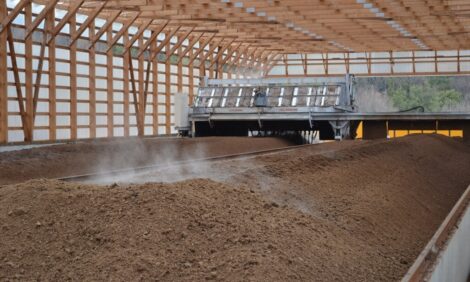



Co-infection of Broilers with ORT and H9N2 Avian Influenza Virus
Chinese researchers report what they believe to be the first evidence of co-infection in broilers with Ornithobacterium rhinotracheale (ORT) and H9N2 avian influenza viruses. They suggest that this co-infection is probably associated with the outbreak of broiler airsacculitis in China, which has caused extensive economic losses.Since 2008, a progressive pneumonia has become prevalent in broilers and laying hens, according to Qing Pan of the China Agricultural University in Beijing and co-authors there and at Beijing Veterinary Biological Manufactory. In a paper in BMC Veterinary Research recently, they explain that the disease occurs on the first day after hatching and lasts more than 30 days, resulting in approximately 70 per cent morbidity and 30 per cent mortality in broilers.
The objectives of their study were to isolate and identify the pathogens responsible for the progressive pneumonia and establish an animal model for drug screening.
A total of 193 serum samples were collected from eight intensive farms from five provinces in China and analysed in the current research.
The clinical survey showed that 65.2 per cent to 100 per cent of broiler breeders, layer breeders, broilers and laying hens were seropositive for ORT antibodies. From the eight intensive farms, six ORT isolates were identified by PCR and biochemical assays, and two H9N2 viruses were isolated. Newcastle disease virus (NDV) and infectious bronchitis virus (IBV) were excluded.
Typical pneumonia and airsacculitis were observed both in broilers inoculated intraperitoneally with an ORT isolate alone and in those co-infected with ORT and H9N2 virus isolates. Specifically, the survival rates were 30 per cent, 20 per cent, 70 per cent, 50 per cent and 90 per cent, respectively in birds inoculated with ORT+H9N2 virus, ORT followed by H9N2 virus, H9N2 virus followed by ORT, and ORT or H9N2 virus alone.
The results of this study suggest that ORT infections of domestic poultry have been occurring frequently in China, concluded Pan and co-authors. ORT infection can induce higher economic losses and mortality if H9N2 AIV is also present.
They added that although the isolation of ORT and H9N2 virus has been reported previously, there have been no reported co-infections of poultry with these two pathogens. This is the first report of co-infection of broilers with ORT and H9N2 virus, they said, and this co-infection is probably associated with the outbreak of broiler airsacculitis in China, which has caused extensive economic losses.
Reference
Pan Q., A. Liu, F. Zhang, Y. Ling, C. Ou, N. Hou and C. He. 2012. Co-infection of broilers with Ornithobacterium rhinotracheale and H9N2 avian influenza virus. BMC Veterinary Research, 8:104. doi:10.1186/1746-6148-8-104.
Further ReadingYou can view the full report (as a provisional PDF by clicking here. |
Further ReadingFind out more information on the diseases mentioned in this article by clicking here. |
August 2012








